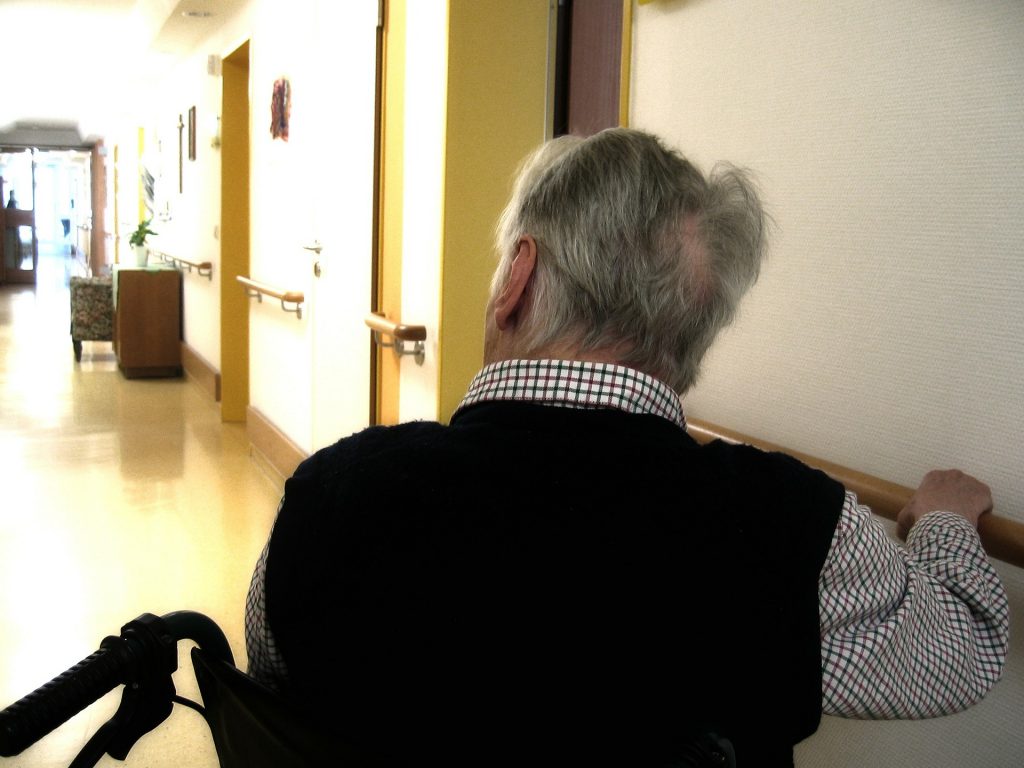As the scale of the disaster inflicted on our care homes and social care by the Coronavirus has become clear, and the scale of government incompetence, negligence and contempt for the care sector has been exposed, both Matt Hancock and Boris Johnson have made untruthful claims in an effort to cover up.
On May 13 Johnson told MPs “We brought in the lockdown in care homes ahead of the general lockdown.” But extensive research by Reuters has produced no evidence of any such pre-emptive action.
Two days later Hancock made the now infamous claim that “right from the start we’ve tried to throw a protective ring around our care homes,” claiming to have first set out advice in “February”. But in fact as Keir Starmer had pointed out in exchanges with Johnson, the government claimed right up to March 12 that it was very unlikely care home residents would be infected.
Hancock’s implausible claims have been repeatedly and systematically refuted ever since, by a succession of care home staff and managers, notably in a series of reports on the BBC’s Newsnight and a major investigation on File on 4.
Prioritise emptying hospital beds
They have explained how badly they have been and are still being let down, both by government and by local NHS trusts, which followed NHS England instructions to prioritise emptying thousands of hospital beds to prepare to cope with for Covid patients – even at the expense of further spreading Covid infection into vulnerable care homes.
Among the less likely, but more vocal critics revealing the facts that undermine Hancock’s claims, has been the Daily Telegraph, with a toughly-worded feature from its Economic Intelligence section on May 12 Government’s handling of Covid-19 is a very British disaster. It quotes at length from a cardiologist at a top London hospital – “friendly to Boris:”
“Our policy was to let the virus rip and then ‘cocoon the elderly’,” he wrote. “You don’t know whether to laugh or cry when you contrast that with what we actually did.
“We discharged known, suspected, and unknown cases into care homes which were unprepared, with no formal warning that the patients were infected, no testing available, and no PPE to prevent transmission.
“We actively seeded this into the very population that was most vulnerable.”
Aggrieved NHS trust bosses, angry at carrying the blame for policies imposed from the top down by government and by NHS England, have now, through NHS Providers produced an attempt to refute “the suggestion that they ‘systematically’ and ‘knowingly’ transferred known COVID-19 patients into care homes.”
In doing so they underline the hollowness of Hancock’s and Johnson’s claims to have done the right thing from the beginning.
They confirm that it was only on March 13 did initial guidance from Public Health England (PHE) “encourage residential care homes to review their visiting policy, asking people not to visit if they were unwell and emphasising hygiene measures.”
Just a few days later on March 17, NHS England and NHS Improvement instructed trusts to “urgently discharge all medically fit patients from hospital as soon as it was clinically safe to do so.”
The target was to free up 15,000 acute beds this way … in just ten days. Many were returned or dfischarged to care homes.
Two weeks later the Department of Health and Social Care published guidance (April 2) which insisted that patients with COVID-19 – whether symptomatic or asymptomatic – could be safely cared for in a care home setting, and that negative tests were “not required prior to transfers/admissions into the care home.”
Only on 15 April did the government’s Adult social care action plan say trusts would need to test every patient prior to discharge – whether they had symptoms or not.
NHS Providers now argue that “Trusts were already testing patients and care home residents with symptoms” – but accept this was only done “wherever testing capacity allowed.”
Two months after instructing hospital trusts to speed through the discharge of patients came new NHS England guidance to test all patients being discharged to a care home up to 48 hours before discharge. By then the damage had been done.
Nothing to protect care homes
So NHS Providers may have a case when they argue that trusts did not “knowingly” or “systematically” discharge COVID infected patients to care homes: but neither did they do anything to protect the care homes from the disaster that has occurred.
Care home managers have been telling of the bullying and moral blackmail of trusts sending ambulance crews with patients to demand the care home accept them back to “their home.”
And they have been telling of the consequences. Two of the largest care home chains have had over 1,000 COVID-linked deaths (HC-One) and over 500 (Four Seasons): care home COVID deaths have been running at over five times the numbers in hospital – where thousands of beds are still empty.
At the last count ONS figures show over 26,000 care home deaths involving COVID-19 since the middle of April, not including care home staff. If that’s Hancock’s “protective ring” at work, it’s not very impressive.
Dear Reader,
If you like our content please support our campaigning journalism to protect health care for all.
Our goal is to inform people, hold our politicians to account and help to build change through evidence based ideas.
Everyone should have access to comprehensive healthcare, but our NHS needs support. You can help us to continue to counter bad policy, battle neglect of the NHS and correct dangerous mis-infomation.
Supporters of the NHS are crucial in sustaining our health service and with your help we will be able to engage more people in securing its future.
Please donate to help support our campaigning NHS research and journalism.


